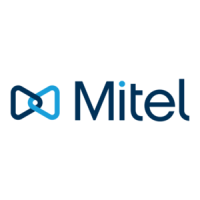System Overview
Table 7: Analogue Mitel phones
Product Principal common features Additional model-specific
features
• Destination dialling keys
• Frequency dialling or pulse
dialling
• Handsfree
• Adjustable volume (handset
and loudspeaker)
• System features can be used
via function codes
• Headset connection
• Wall mounting possible
• Functions controllable via
communication server:
Message display on/off,
delete redial key memory.
• Ideally suited for hospitality
and hotel environments
Mitel 6730 Analogue:
• Three-line display
• 100 phone book contacts
• 50 entries each on call list
and redial list
• Number/name display for
incoming calls
• Clock with wake-up function
• Functions controllable via
communication server: Delete
call lists and local phone
book, set date, time and
language.
The Aastra 1910 and Aastra 1930 analogue phones are still supported.
2.5 Various phones, terminals and equipment
Thanks to the use of international standards other clients, terminals and phones, Mitel and third-party, can
be connected and operated on the communication server:
• SIP-based phones
With the integrated SIP protocol SIP-based phones (softphones, hardphones) - or via an SIP access
point also WLAN and DECT phones - can be connected to the communication server. Besides the basic
telephony functions, features such as call transfer, conference calls or CLIP/CLIR are also supported.
Function codes can also be used to operate various system functions.
• Cordless phones
Other DECT phones can be operated in GAP mode.
• Analogue terminals
All terminals (phones, fax, modem, etc.) approved by the network operator can be connected on the
analogue terminal interfaces. The communication system supports pulse and frequency dialling modes.
• ISDN terminals
ISDN terminals that comply with the Euro ISDN standard can be connected to the BRI-S terminal
interfaces. The communication system provides a series of ISDN features at the S bus.
Release 7.1
System Manual for Mitel SMB Controller 18

